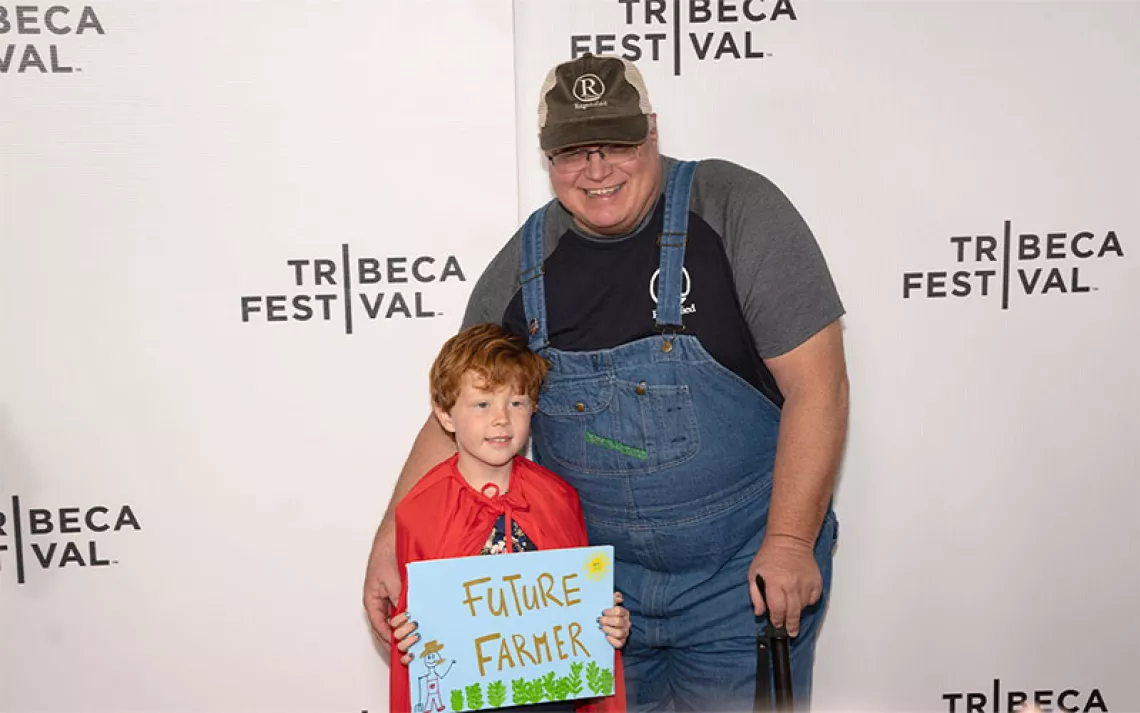France’s Feel-Good Eco-Flick Arrives in Time for Earth Day
The filmmaker behind Demain (Tomorrow) talks about how optimism just might save the planet
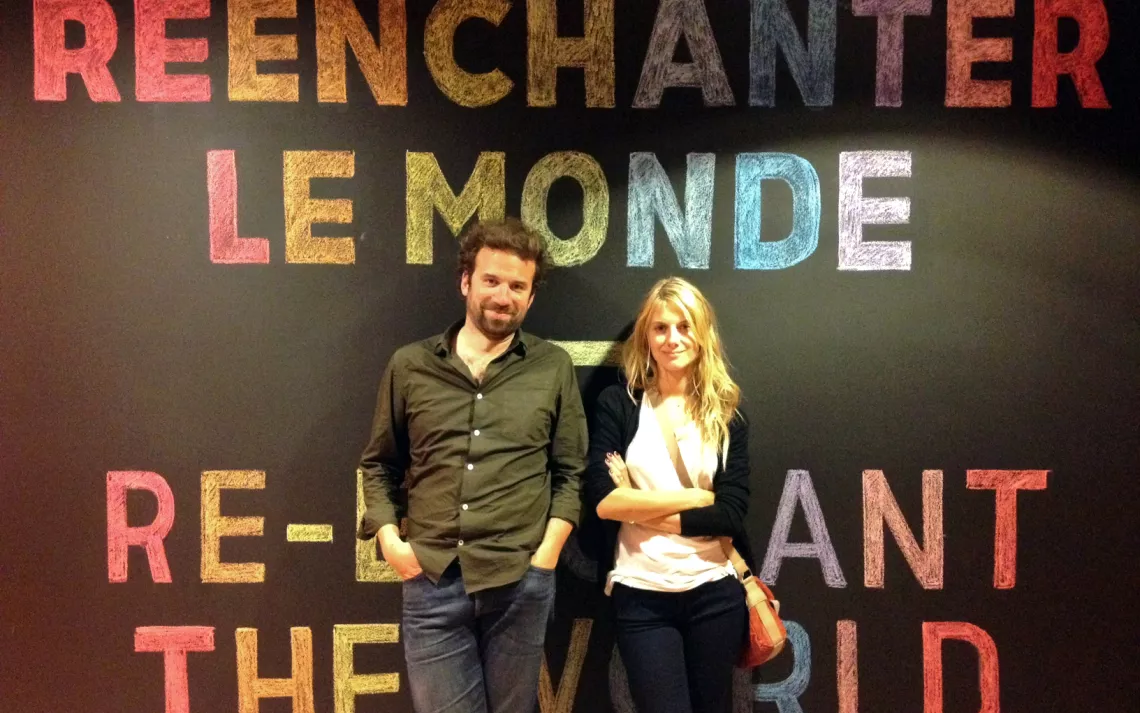
Photos courtesy of Under the Milky Way
As the globe fries, studies from the field of social psychology show that predictions of wildlife extinctions, mega-droughts and famine, and torched rainforests fail to mobilize most of us to climate activism. More often, they plunge us into environmental grief and activate psychological defense mechanisms.
Following a hunch that people might find solution-oriented discussions more motivating, French actress-filmmaker Melanie Laurent (of Inglorious Basterds fame) and activist Cyril Dion teamed up to create a film highlighting everyday citizens trying to make the world a more sustainable and just place—and actually achieving results. They traveled to 10 countries and along the way talked with organic farmers working to turn economically devastated Detroit into a food hub, policymakers set on making Copenhagen energy independent, Finnish schoolchildren who learn through play and collaborative interaction, and the progressive mayor of Kuttambakkan, a village in India experimenting with a form of caste-system-transcending participative democracy, among many others.
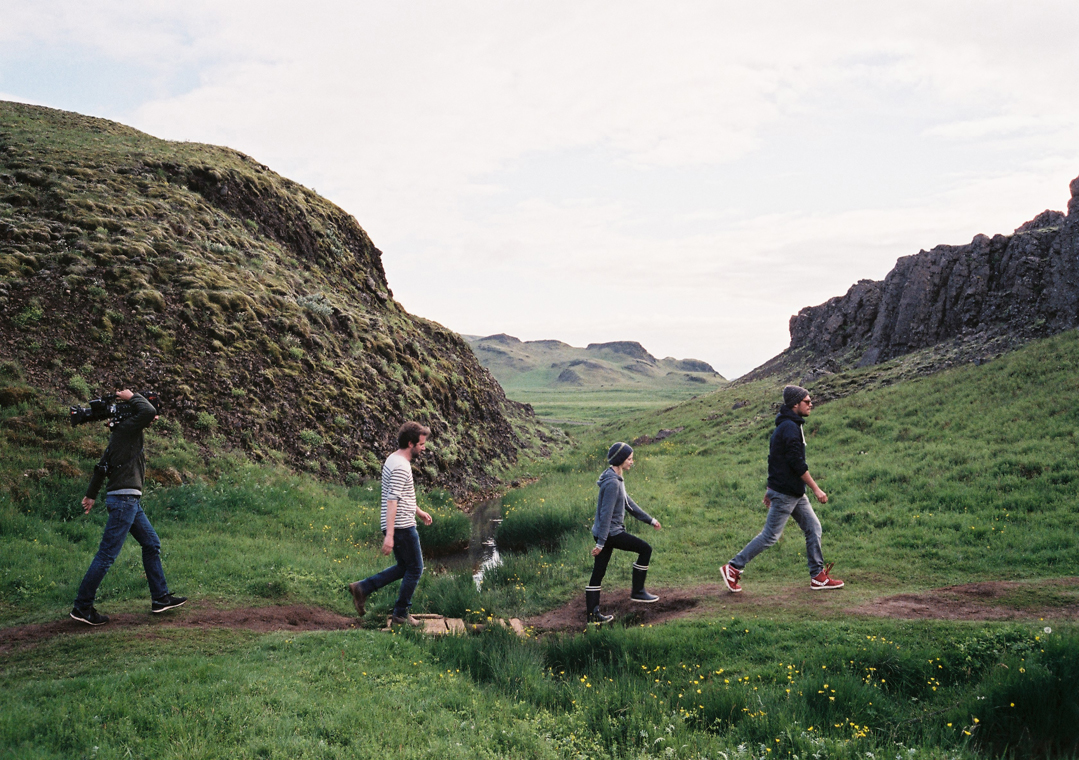 Their globe-trotting documentary, Demain, hit French theaters at the end of 2015, thanks to a successful crowdfunding campaign. This week it arrives in most U.S. markets, with the English title, Tomorrow. The film already made a big splash with European audiences, grossing more than $10.4 million and fetching a 2016 Cesar Award (essentially a French Oscar) for best documentary.
Their globe-trotting documentary, Demain, hit French theaters at the end of 2015, thanks to a successful crowdfunding campaign. This week it arrives in most U.S. markets, with the English title, Tomorrow. The film already made a big splash with European audiences, grossing more than $10.4 million and fetching a 2016 Cesar Award (essentially a French Oscar) for best documentary.
Upbeat and playful, with an original soundtrack and feel-good ethos, Demain is a departure from greens’ standard cinematic fare. However, junk food it isn’t. Demain does a remarkable job of connecting the dots between climate change and its ripple-effect role in issues including food shortages, dirty politics, social injustice, and economic meltdowns. The film not only offers a holistic glimpse into the various ways to reverse environmental decline, but also makes a strong case for the intersectional nature of climate change solutions.
It isn’t all solutions and cheer, though. The film kicks off with a conversation between Stanford biologist Elizabeth Hadly and UC Berkeley paleontologist Anthony Barknosky, who in 2012 revealed in the journal Nature that rising temperatures and human population growth are putting the planet on track for a mass extinction by 2100. The conversation prompts Laurent and Dion to ask, “In which world will our children live in 40 years?” And to jet off in search of answers.
In an age of inadequate (to put it mildly) governmental climate action, it’s inspiring to meet some of the farmers, teachers, and community leaders who are taking power back from governments and corporations. At the end of the two-hour film, a sustainable future feels within reach—that is, if many, many more of us get innovative about global sustainability. The idea, Dion says, is to inspire viewers to do just that.
Sierra recently connected with Dion—a sort of Renaissance man who helped found Colibris, an NGO dedicated to finding local solutions for global disorder, and cofounded Kaizen magazine as well as a small publishing house called Domaine du Possible. From his home near Normandy, he talked about his filmmaking process and shared his thoughts on bringing his passion projects into the mainstream.
Sierra: How did you arrive at the idea of highlighting a range of different environmental and social solutions?
Cyril Dion: I was running an NGO for 10 years, and I had the feeling that we couldn’t really reach people by telling them only about the catastrophes. We needed stories about how we could get from a really difficult situation to a world where we would actually like to live. And beyond that, I wanted to show that it’s not only about changing from chemical agriculture to organic, or from fossil fuels to renewables—but also about changing the way we look at society. We wanted the movie to show that everything is connected and that moving forward, we need to approach the world more holistically. We are pretty much used to seeing a problem and trying to fix it. But most of the time the issue at hand is only a symptom—to truly fix it, we need to have a broader view of the problem.
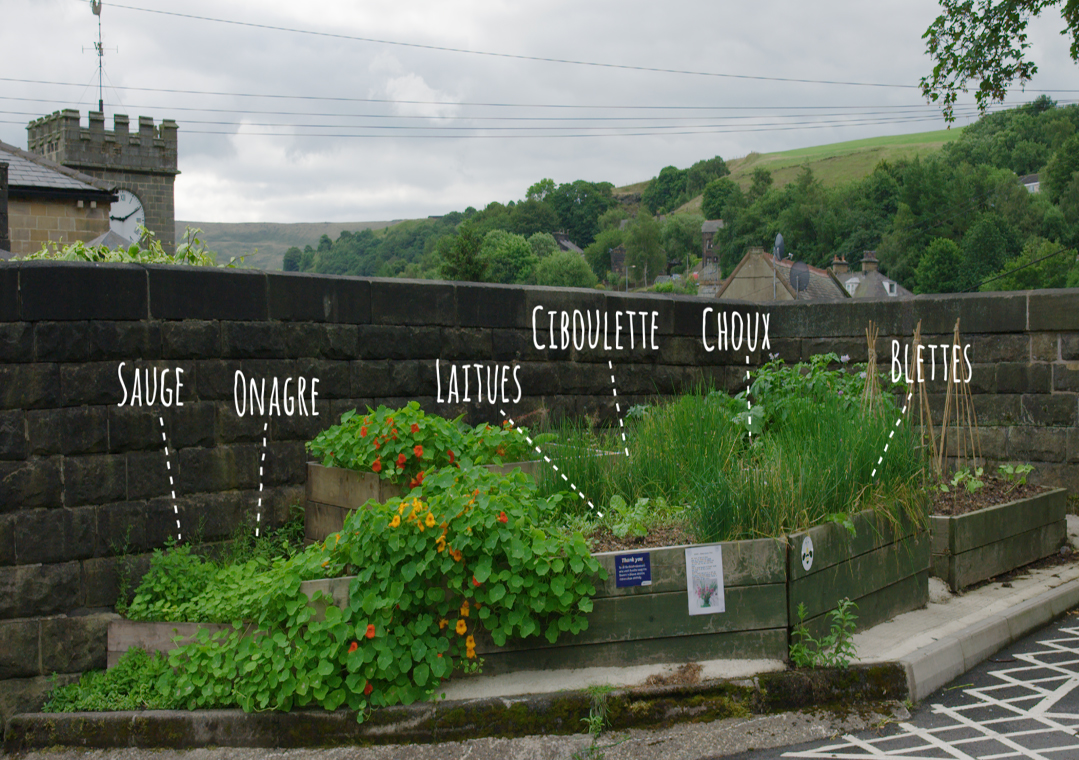 What were the challenges of focusing on the optimistic rather than the catastrophic?
What were the challenges of focusing on the optimistic rather than the catastrophic?
It was definitely a point [laughs]. When I went to talk to producers and distributors, many didn’t believe in this film. “People want blood and drama; good news doesn’t make headlines!” they said. They said all the big movies and big novels are about problems. What made a huge difference is we crowdfunded through Kiss Kiss Bank Bank. We were hoping to get €2,000 in three months, but we got it in two days. I think it’s because people were responding to a basic need. They’re sick of feeling despair, of feeling clueless about what we’ll do, and this project offered some kind of answer.
How did you decide which case studies and stories would help provide that answer?
I’ve spent years talking about these issues through my NGO and my magazine, and I’m in charge of a book series in France that focuses on agriculture, energy, the economy, democracy, and education. So right away, a lot of great examples came to mind. The problem was narrowing down and selecting the best ones.
But we didn’t want to just take good, positive examples and feature them one after the other, like in a catalog—we wanted to tell stories. So, that’s the reason we [Dion and coproducer Melanie Laurent] are in the movie. The audience can follow us and identify solutions along with us—they can make the realization with us that everything is connected. For example, our subjects show some really great examples of agricultural solutions. But of course at some point, we’re blocked, because if we want to go further to revolutionize food systems, we have to overcome a new obstacle—the fact that farms are really dependent on fossil fuels. So, we needed to keep investigating energy, and with those solutions, we find that some countries and some cities can’t go from fossil to renewable energy because it’s too expensive, and because of dirty politics. So, we have to find some new solutions for the economy, and so on, and so on. That approach offered a way to put some drama into the movie—we tried to alternate between really bad news and solutions. When you hear really bad news about the world, it’s disheartening—a gut punch. So we’d offer a punch in the stomach, then a solution, a gut punch, then a solution [laughs].
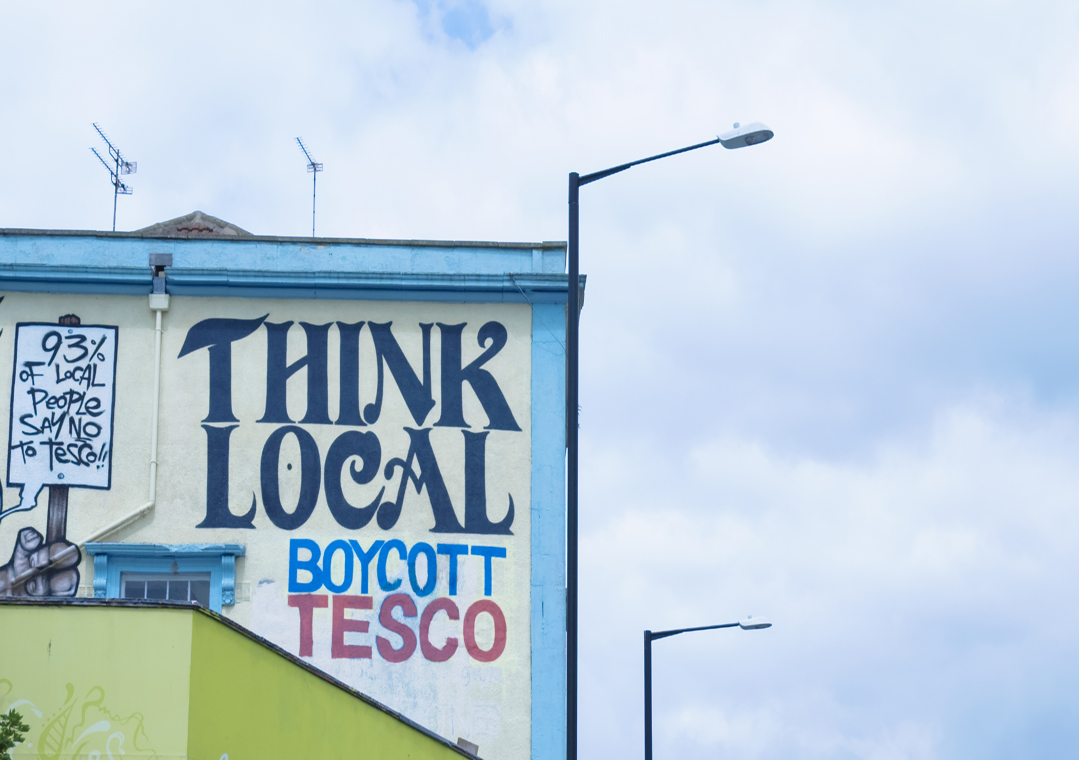 Did you have a target audience in mind as you created this film?
Did you have a target audience in mind as you created this film?
The whole point was to make these issues digestible, because I was always seeing the same people going to these types of movies—activists who are just going to reinforce their own points of view. I wanted to reach a broader audience, of people who previously didn’t know or care so much about the issues. So many of the more than a million people who saw it in theaters in France said afterward, “You know, I didn’t want to come because I thought it would be another depressing documentary about ecology. But, it was great and positive and I learned so much and met some inspiring people.” But getting to that point took a really long time—I started writing the film in December of 2010.
How do you account for its accessibility?
We spent nine months editing the movie, just to find the right balance—of telling small stories within big stories. Because each issue we addressed needed to unfold as a story. We also needed to make sure there was a rhythm, and that it didn’t get too boring.
The hip, energizing soundtrack helped. Can you talk about the process of scoring this film?
I love music—my wife tells me I make movies just to put music in them [laughs], and to some extent I think that’s true. I wanted this one to have the feel of a road movie, and in a road movie you have a lot of music. At some point I received a call from a friend at Sony Studios in Europe about [Swedish singer and songwriter] Fredrika Stahl. He said he’d told her about the movie and she’d composed this piece, which is now the first song in the movie, "The World to Come." It’s really depressing, so my first thought was, Does she get it? That’s not the movie we want to make. But two or three days later, we were editing that first part, featuring these two scientists discussing climate change—it’s really the most scary and depressing part of the movie—and I thought, OK, let’s try playing this song, and it was really moving, actually. So, I asked Fredrika to compose another, and then another—she wrote while watching specific sequences, and at some moments I asked her for really precise things—and three great pieces of music later, we decided to work together. In the end, Fredrika composed 17 pieces for the film, including six original songs. To me, she’s the third author of this movie.
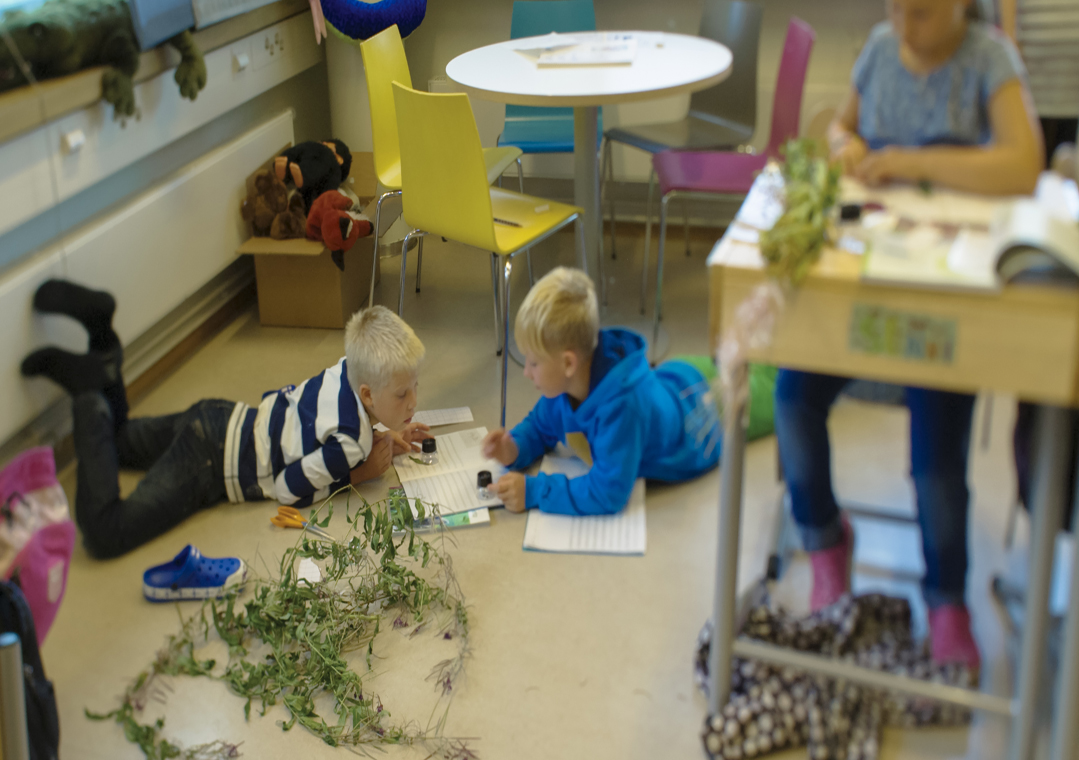 What part did you most enjoy filming and learning about?
What part did you most enjoy filming and learning about?
I would say the school in Finland, because as a kid, I just hated school. So while there, I experienced a strange mix of anger and joy. Joy to see that you could create a school where kids feel free and can discover what their talents are. And angry to not have a school like that near my home, where I could send my kids.
What are you hoping U.S. audiences take away from your film?
I hope it inspires them to organize and make positive things happen. I’ve traveled to 17 countries promoting the film, and it’s really amazing to hear how many people walk out of the theater and then the next morning started to do something. In fact, we received so many stories that we started collecting them on our French website, in a section called The Day After Tomorrow. There are something like 700 stories up now—just a tiny fraction of all the ones I’ve heard. After a screening in a city in France called Vienne, I was feeling like there was a lot of energy during the Q&A, so I said, somewhat jokingly, "I won’t leave until you all gather and decide what you’re going to do next!" This man walked up and said, "Here’s my address—you can all come by next Saturday at 3 P.M.," and I was thinking, OK, who’s really going to come? But then a few weeks later, I met up with the guy running the city’s bookshop, and he said 45 people showed up at this guy’s apartment, and there wasn’t enough room in his living room, so they split through the house into mini workshops to address projects in the movie, and more, too! At the second meeting, there were 120 people, and at the third, 260! So now, they’re almost 300 people deep and working on all sorts of projects to develop solutions within their own community. So I’m hoping that’s what happens in the U.S.—but the main objective, especially in those parts of a country where ecology might not be a main focus, is to get people inside the movie theaters. Once they’re there, they usually like it!
 The Magazine of The Sierra Club
The Magazine of The Sierra Club



